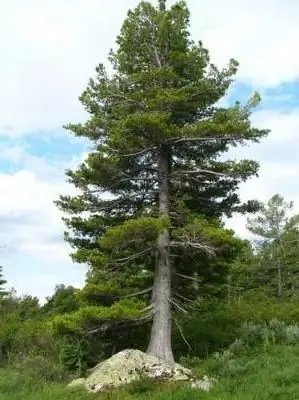- Author Henry Conors [email protected].
- Public 2024-02-12 02:43.
- Last modified 2025-01-23 09:07.
The West Siberian Plain is one of the greatest plains in the world. From north to south, it stretches for two and a half thousand kilometers, from west to east - a little less than two thousand. Its natural boundaries are: in the north - the seas of the Arctic Ocean, in the south - the Kazakh hills, in the west - the Urals and in the east - the Yenisei. The area of the plain is slightly less than three million square kilometers.

There are many deposits of various minerals here. But the main ones are hydrocarbons. The West Siberian Plain is the largest oil and gas bearing region of the Russian Federation and one of the largest in the world.
The large area and relative uniformity of the relief have caused the West Siberian Plain to include a large number of natural and climatic zones with a clear distribution from north to south. In areasadjacent to the Arctic Ocean, the dominant type of landscape is tundra with extensive wetlands. To the south, the character of the terrain is gradually changing. The tundra is replaced by forest-tundra with islands of low trees, to the south - taiga, consisting of dark coniferous trees, and further south is a belt of deciduous forests. At about the fifty-fifth parallel, the forests are diluted with steppe and fields, and there is almost no forest on the border with Kazakhstan, with the exception of the eastern regions of the plain.

In the seventies of the last century, the West Siberian Plain was subjected to strong anthropogenic impact. The impact continues to this day. This is due to the beginning of mass development of hydrocarbon deposits. But even now, vast areas outside of hydrocarbon deposits remain wild, as they were many years ago.
Natural conditions even at the same latitude are slightly different here. This is due to the fact that the West Siberian Plain, whose climate depends on the presence of a natural barrier (the Urals) that protects against warm westerly winds, lies in the region of transition from a temperate continental climate to a sharply continental one. And if the difference between the prevailing summer and winter temperatures in the regions adjacent to the Urals is less pronounced, then the left bank of the Yenisei is already a territory where a full-fledged sharply continental climate reigns.
There are no large elevation changes here, but still there are small hills, lowlands and swamps, which are especially rich in the West Siberian Plain. The relief seems to consist of elements (Vasyugan plain, Kulunda ranina, Baraba lowland, and so on), competing with each other - who is lower. And only in the north are Siberian Uvals -

a ridge nine hundred kilometers long, the highest point of which barely exceeded three hundred meters.
Separately, it must be said about the rivers of the West Siberian Plain. Almost the entire territory is occupied by the Ob basin with the main tributary, the Irtysh. The eastern part of the plain is included in the Yenisei basin. The territory is provided with water resources in abundance. But due to the flat nature of the river and the absence of elevation changes, there are practically no large hydroelectric power stations on it, with the exception of Novosibirsk, located in the upper reaches. Despite the huge potential, the construction of a hydroelectric power station on the Ob below Novosibirsk is impossible, since in this case a huge territory will be flooded.






